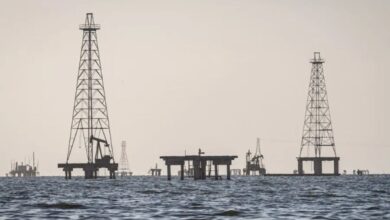What can Latin America learn from Cape Town?
Diversification and sustainability are key lessons for South American leaders regarding the growing water crisis in South Africa

Cape Town, the second largest city in South Africa, famous for its natural splendor, is fast approaching the date when it must turn off most of the city’s water pipes. July 9 was called the Zero Day, because it marks the moment when South African officials predict that the surrounding dams of the city will dry up, suburban water sources will be closed, and millions of citizens will be left without running water.
Leer en español: ¿Qué puede aprender Latinoamérica de Ciudad del Cabo?
While local officials and water departments in Cape Town strive to extend the remaining water and design solutions in the short term, Latin America must be alert to the evolution of the situation, as its regions face increasingly destructive droughts.
Just three years ago, Cape Town was presented as a leader of conservation and water management. In 2015, Cape Town won the ‘Adaptation Implementation’ award from C40 for its “comprehensive water conservation and water demand management program (WCWDM) aimed at minimizing water waste and promoting efficient water use”. It is worth noting that C40 is a collection of international cities dedicated to the fight against climate change.
Now, after three years of severe droughts and an influx of residents, the water levels in the supply dams have been decimated. The city risked its water supply due to the dependence on rain collection. In July, if water levels continue to fall at this rate, almost four million citizens will only find water in the two hundred collection points of the city.
In the last three years, Latin America has also suffered extreme droughts and growing symptoms of climate change. Deaths from malnutrition have exploded in Colombia due to access to water as a result of the country’s worst drought in history. By the end of 2016, more than half of Bolivia’s provinces have been affected by the worst drought of the century. Last year, Peruvian farmers rushed to redistribute water to more than 6,400 hectares of crops due to water shortages.
Most notable, however, is that a recent three-year drought has led Brazil – and especially São Paulo – to its worst water crisis in the last 100 years. The residents of São Paulo faced daily water cuts of 12 hours and reached the point of a rationing schedule: five days without water and two days with water. The children suffered dehydration and residents resorted to consuming water sources contaminated by sewage. In addition, the drought in Brazil caused a double problem due to its great dependence on hydroelectricity. With 70% of its energy derived from hydroelectric power , millions of citizens simultaneously lost access to water and electricity.
Cape Town has accelerated towards similar conditions, and with current forecasts, officials are preparing for even more violent consequences as citizens struggle for water. The national government is struggling to pump more water from the ground and build desalination plants. However, academics believe that water diversification should have started years ago.
“Cape Town teaches us that water crises are rarely a matter of rain,” says David W. Oliver, South Global Climate researcher. “And with timely responses to disaster declarations, the water increase infrastructure could already have been operational.”
The Brazilian government has apparently made great improvements with the diversification of its water supply. São Paulo, for example, diverted water from nearby river basins, repaired leaking pipes to save 6% more water, and drilled 400 new wells to access groundwater.
However, other Latin American governments remain exceptionally short-sighted. Colombia imposed restrictions on use and invested more in localized rainfall deposits. The Peruvian government invested and distributed in purification tablets , but it has not addressed the underlying causes and long-term solutions. With the drought weather forecasts for this year, governments should start preparing long-term solutions for past water problems.
How can Latin America rethink its relationship with water? Considering climatic phenomena are becoming increasingly erratic, how can the region guarantee a sustainable future for the most vital resource of humanity?
Recent years of drought have highlighted the dangers of the singular dependence on rainwater. Government institutions must be proactive, rather than reactive. Water sources must diversify and adapt to global climate change. The coming months will certainly be difficult for Cape Town, but their warning for the next crisis, hopefully, may be a case study on the response to climate change for Latin America.
Latin American Post Jesse Brooks
Translated from “ ¿Qué puede aprender Latinoamérica de Ciudad del Cabo?”





